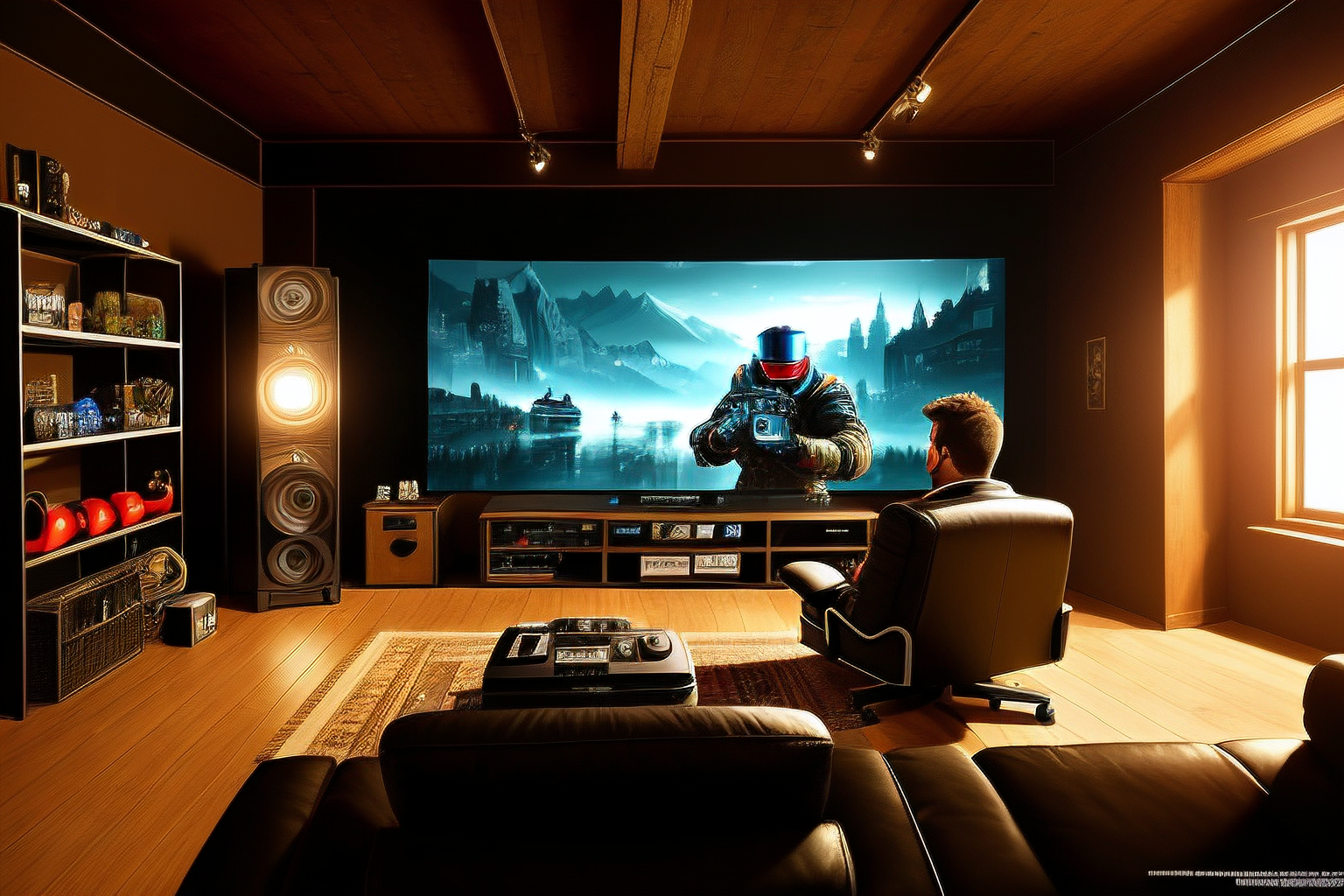The Psychology Behind Addictive Casual Games
Ever wondered why you can’t put down that simple game on your phone? It’s not just luck or coincidence—there’s a whole psychology behind why casual games hook us so deeply. These games are designed with a clever blend of reward systems, motivation triggers, and behavioral nudges that keep you coming back for more. Think of it like a puzzle where every piece is perfectly placed to tap into your brain’s natural cravings for achievement and fun.
At the heart of it, casual games are masters at playing with your expectations and emotions. They use what psychologists call variable reinforcement schedules, which means rewards don’t come at predictable times. Sometimes you win big, sometimes you get a small prize, and other times nothing at all. This unpredictability creates a kind of excitement that’s hard to resist—much like the thrill of a slot machine, but wrapped in colorful graphics and simple gameplay.
But it’s not just about the rewards. These games cleverly mix in motivation factors that make you feel accomplished, socially connected, or simply distracted from daily stress. Whether it’s beating a tough level, sharing your score with friends, or just zoning out after a long day, casual games tap into what drives human behavior on a deeper level. They’re like little escapes that promise a quick dopamine hit without demanding too much effort.
On top of all that, casual games build habits by encouraging repetitive actions and using subtle cues to nudge you back in. Maybe it’s a daily login bonus or a reminder that your energy is refilled. Over time, these small triggers form a routine, making the game part of your daily life without you even realizing it. It’s fascinating—and a bit surprising—how these simple design choices can lead to long-term engagement and, in some cases, addictive behavior.
In short, the psychology behind addictive casual games is a mix of smart design and human nature. They tap into our love for rewards, our need for motivation, and our tendency to form habits. Next time you find yourself glued to a casual game, remember: it’s not just a game. It’s a carefully crafted experience designed to keep you entertained and engaged, one level at a time.
Reward Systems and Player Engagement
Ever wondered why you keep clicking and tapping on casual games, even when you promised yourself just one more round? The secret lies deep within the reward systems cleverly designed to grab your attention and hold it tight. Game developers don’t just throw rewards at you randomly; they use a smart technique called variable reinforcement schedules. This means you never know exactly when the next prize or bonus will pop up, making the experience feel like a thrilling treasure hunt where the next reward is always just around the corner. It’s like waiting for a surprise gift – sometimes you get it quickly, sometimes you wait longer, but that uncertainty keeps you hooked.
These reward systems tap into our brain’s natural love for surprises and achievements. When you get a reward, your brain releases dopamine, the “feel-good” chemical, which makes you want to play more. This cycle of anticipation and reward creates a loop that’s hard to break. Think of it like fishing: the line is your effort, and the catch is the reward. You never know when you’ll reel in a big one, so you keep casting again and again.
But it’s not just about shiny prizes or points. Casual games often use small wins that feel satisfying and encourage you to keep going. These can be leveling up, unlocking new characters, or simply beating your last score. Each tiny victory acts like a pat on the back, boosting your motivation and making the game feel rewarding even if the progress is slow.
Interestingly, the timing and frequency of these rewards are carefully balanced. Too many rewards too quickly can make the game boring, while too few can make it frustrating. The sweet spot lies in creating a rhythm that surprises you just enough to stay interested but not so much that you lose patience. This balance is what keeps millions glued to their screens, often without even realizing why.
In essence, the reward system in casual games is a masterclass in psychology. It’s about playing with your expectations, giving you just enough to feel accomplished, and keeping that spark of curiosity alive. Next time you find yourself hooked on a simple game, remember: it’s not just fun – it’s a carefully crafted dance between your brain and the game’s clever design.
Motivation Factors in Casual Gaming
Ever wondered why you find yourself diving back into a casual game, even when you said you’d stop? It’s not just about killing time. There’s a whole psychology behind what pulls you in and keeps you hooked. At the heart of it, motivation in casual gaming is a mix of both intrinsic and extrinsic factors that work together like a well-oiled machine.
Intrinsic motivation is all about the joy and satisfaction you get from the game itself. Think about the thrill of solving a tricky puzzle or the pride in beating your own high score. It’s that feeling of achievement that nudges you back for just one more round. It’s like your brain is rewarding you with a little pat on the back every time you succeed. This internal drive is powerful because it feels personal and fulfilling.
On the flip side, extrinsic motivation comes from outside rewards or social connections. Maybe you’re competing with friends, sharing your progress, or unlocking new levels and items. These external rewards create a sense of accomplishment and belonging. It’s like being part of a club, where each badge or trophy you earn shows you belong and are making progress. Social interaction, even in casual games, can be a huge magnet. Players often return just to chat, compare scores, or team up, turning a simple game into a social hangout.
Then, there’s escapism — a motivation that’s often overlooked but incredibly powerful. Casual games offer a quick getaway from the stresses of daily life. When you’re stuck in traffic or waiting in line, tapping away at a game transports you to a different world. This mental break feels refreshing, almost like a mini-vacation for your mind. It’s no wonder people come back, craving that little escape.
So how do these motivations blend together? Imagine a casual game as a cocktail mixed with:
- Achievement – the sweet taste of winning or progressing
- Social interaction – the fizz of connecting with others
- Escapism – the relaxing aftertaste of a mental break
Each sip makes you want more. This blend keeps players coming back, session after session, making casual games feel less like a pastime and more like a habit.
Behavioral Patterns and Habit Formation
Ever caught yourself reaching for your phone to play a quick game, only to realize an hour has slipped by? That’s no accident. Casual games are crafted with a deep understanding of behavioral patterns and habit formation. They don’t just entertain—they subtly shape your daily routines. The secret lies in how these games use repetitive actions and cues to hook players for the long haul.
Think about your morning coffee ritual. You don’t just drink coffee; you follow a pattern—grind beans, brew, sip. Similarly, casual games create small, repeatable tasks that become part of your daily rhythm. These actions often come with immediate feedback, like points, badges, or unlocking new levels, which act as tiny rewards. Over time, these rewards trigger a loop in your brain, nudging you to come back again and again.
One powerful tool game designers use is cue-routine-reward loops. A notification might be the cue, prompting you to open the game (routine), and the reward is the satisfaction of completing a level or earning a prize. This cycle strengthens your habit, making the game a natural part of your day without you even realizing it.
What’s fascinating is how these games tap into your brain’s craving for consistency and predictability. The repetitive nature of tasks creates a sense of comfort and control, which feels good. But there’s more beneath the surface. The unpredictability of certain rewards—sometimes you get a big prize, sometimes a small one—keeps things exciting. This mix of routine and surprise is like a dance that keeps players hooked.
Here’s a quick look at how this works:
| Behavioral Element | How It Works | Effect on Player |
|---|---|---|
| Cues | Notifications, visual prompts, or sounds | Triggers player to start playing |
| Routine | Simple, repeatable actions like tapping or matching items | Builds familiarity and comfort |
| Rewards | Points, badges, new levels, or surprises | Creates satisfaction and motivation |
In my own experience, I’ve noticed how even the smallest reward can make a big difference. Just one unexpected bonus can turn a “maybe I’ll play” moment into a “definitely playing” habit. It’s like the game is gently whispering, “Come back, I’ve got something for you.” And honestly, it’s hard to resist.
So, next time you find yourself glued to a casual game, remember—it’s not just fun. It’s your brain responding to carefully designed patterns that build habits. Understanding this can help you enjoy the game while staying in control of your time and attention.
Frequently Asked Questions
- Why do casual games feel so addictive?
It all boils down to clever psychological tricks! Casual games often use variable reward systems, meaning you never know exactly when the next big win or prize will come. This unpredictability keeps your brain hooked, much like a slot machine. Plus, they tap into your natural desire for achievement and social connection, making it hard to put the game down.
- What are the main motivations behind playing casual games?
People play casual games for a mix of reasons. Some want to escape daily stress, others crave a sense of accomplishment, and many enjoy connecting with friends through leaderboards or multiplayer features. These intrinsic and extrinsic motivations work together to pull you back for “just one more round.”
- How do reward systems in casual games work?
Reward systems are designed to trigger your brain’s pleasure centers. By using variable reinforcement schedules, games give rewards at unpredictable times, which is far more engaging than fixed rewards. This technique encourages you to keep playing, hoping the next reward is just around the corner.
- Can playing casual games lead to habit formation?
Absolutely. Casual games often create habits by encouraging repetitive actions and using cues like notifications or daily challenges. These triggers build a routine that feels natural over time, making the game a regular part of your day—and sometimes, leading to addictive behavior.
- Is it possible to enjoy casual games without becoming addicted?
Yes! The key is balance and awareness. Enjoy the fun and challenge, but set limits on your playtime. Recognizing when the game stops being a fun escape and starts interfering with your daily life is crucial to keeping your gaming healthy.
- Why do game designers focus so much on player engagement?
Engagement is the lifeblood of casual games. The longer you play, the more likely you are to spend money or recommend the game to friends. Designers use psychology to create experiences that are not only fun but also keep you coming back, turning simple games into addictive habits.


